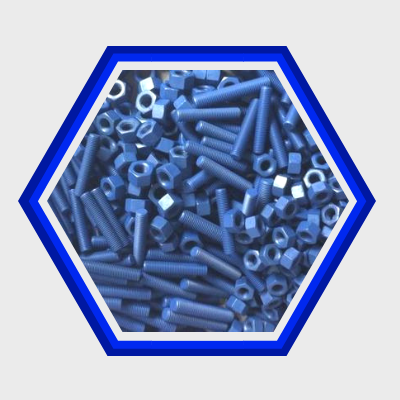You asked: Can you Anodise Stainless Steel?
.png)

.png)
We sometimes get enquiries asking if it’s possible to anodise Carbon and Mild Steels. Most often this is being done for decorative rather protective reasons, with customers looking for a uniform and flake free coating. The short answer is that no, Silchrome cannot offer anodising on steels but there is a process that is referred to as this. Let's discuss in more detail.
What is Anodising? Anodising is an electrolytic process in which components are immersed into a vat/tank which contains a dilute sulphuric acid solution. This promotes oxidation onto the surface and extends the naturally occurring oxide barrier layer. This extended layer will form both above and below the surface and so where you are adding 10 microns through anodising about 5 microns will be below the surface. It is most commonly performed on Aluminium components.
Why Carbon Steels can’t be Anodised? Aluminium components haver a naturally occurring oxide layer which offers protects the base metal and so in undergoing an anodising process this oxide layer is extended and so too is the level of protection. Carbon Steels contain Iron. When Iron comes into contact with oxygen it forms Iron Oxide which is more commonly known as Rust. Rather than protecting the component, it encourages degradation of the metal.
So what Is Stainless Steel Anodising? There is a process which produces somewhat similar results to Anodising for Stainless Steel and although in the most literal sense it can be accurately referred to as anodising in that an anodic current is applied to the parts, it is radically different from Aluminium anodising. This anodising process does not provide stainless steel with the protective attributes that it would for aluminium components and is most often used to apply a diffraction colouration. Visually this is a metallic and reflective finish, something in the vein of a drop of oil in a puddle. For most customers who are enquiring,m this is not what they are looking for, so what would be an alternative process to colour stainless and carbon steels?
Paint and Power: This is the most obvious process which comes to mind, but many customers are concerned that if they paint their components it will peel or flake off. In order to prevent this, Silchrome will first subject the part to a number of pre-plating cleaning processes and in many cases may first apply a layer of Iridite or Phosphating so the Paint adheres better.
Xylan: Similiar to paint in a number of respects, Xylan is a family of specialised coatings all with their own applications. Xylan is applied through a spray and may be more suitable where your component needs to function in an outdoors environment, it also comes in a range of colours.
Zinc and Passivate: Zinc plating will certainly add a layer of protection to your component and is carried out with a number of passivates and dyes which can be coloured for your application. Zinc plating tends to produce a 'patina' effect and perhaps would not be as consistent in tone as the above two options.
Blacking: Chemical blacking is an option for a matte black finish on stainless steel, it converts the surface of the component into a magnetite and has an advantage in having negligible impact on the dimensions of the part.
Whether you need a metal finishing process that is decorative or protective in function, Silchrome Plating can help we offer a wide array of processes all carried out under one roof and where you are unsure which process is best we can guide you. Silchrome Plating are ISO 9001 and 14001 certified and deliver across the UK




